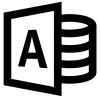Web application
Payroll Management Software

Industry
Manufacturing
Services
Front-end development/
Web app development/UI/UX
Team
2 Developers, 1 Scrum Master
Project’s length
3 Months
S.K Industries
S.k Industries have been able to develop a Diligent Work Force. With their efficacy and expertise ensure full trust and confidence in offering a products with the highest customer satisfaction level.The Production activity is carried out under a clean room condition. With an well established and validated production process system and Planned Quality Control system, each valves undergoes through a series of Quality Checks to ensure for its performance and functional requirements.There manufacture valves in different materials viz., Polypropylene, PVC, Natural Rubber depending on the design of the Medical devices.
Project overview
The project entails the creation of an extensive Payroll Management software designed exclusively for S.K Industries. This specialized software will revolutionize the way payroll procedures are handled within the company by introducing automation and optimization techniques. By implementing this software, S.K Industries will be empowered to efficiently manage various facets of payroll administration, including employee salary calculations, benefit distributions, tax computations, and other pertinent financial operations. The overarching objective is to develop a user-friendly solution meticulously crafted to accommodate the distinctive specifications and demands of S.K Industries. Through this initiative, the aim is to significantly augment the efficiency and precision of payroll management processes, thereby contributing to enhanced organizational productivity and operational excellence.
Our Tasks
Front-end development
Front-end development for the Payroll Management software involves designing and implementing the user interface (UI) and user experience (UX) elements that enable seamless interaction with the software. This includes creating visually appealing layouts, intuitive navigation structures, and interactive features such as forms and menus. Front-end developers also ensure that the software is responsive across different devices and accessible to users with disabilities.
Solid MVP of a web app
This MVP would likely include functionalities such as employee data management, salary calculation, tax computation, and basic reporting capabilities. Additionally, it would feature a user-friendly interface for easy navigation and data input. Integration with essential third-party services, such as payment processors or accounting software, could be included to enhance functionality.
Enabling embedding in-app user tasks
Enabling embedding in-app user tasks within the Payroll Management software streamlines the user experience by providing a cohesive platform for completing essential payroll-related tasks seamlessly. This feature allows users to perform tasks such as entering employee hours, approving time-off requests, and generating pay stubs directly within the application interface, eliminating the need for external tools or manual processes.
Ensuring data security
This involves implementing robust encryption protocols to protect data during transmission and storage, as well as strict access controls to ensure that only authorized personnel can view or modify payroll records. Regular security audits and updates are essential to identify and address potential vulnerabilities, while compliance with industry regulations such as GDPR and HIPAA helps maintain data privacy and integrity.

Challenges
Sustaining competitiveness through enhanced User Experience (UX)
Enhancing the User Experience (UX) within the Payroll Management software is pivotal for sustaining competitiveness in the ever-evolving landscape of S.K Industries. By prioritizing user-centric design principles, the software aims to streamline navigation, simplify complex tasks, and optimize overall usability. Intuitive interfaces, personalized dashboards, and seamless workflows contribute to a more satisfying experience for users, ultimately fostering increased productivity and efficiency. Moreover, continuous refinement based on user feedback ensures that the software remains aligned with evolving industry standards and user expectations.
Building brand loyalty
Establishing brand loyalty for the Payroll Management software entails creating a customer-centric experience that fosters trust, reliability, and satisfaction among users within S.K Industries. By consistently delivering high-quality service, addressing user needs promptly, and providing ongoing support and updates, the software builds a strong emotional connection with its users. Additionally, implementing loyalty programs, personalized communication, and proactive engagement strategies further solidify the bond between the software and its users.
Ensuring expandability of the platform
Ensuring the expandability of the platform for the Payroll Management software involves designing a flexible and scalable infrastructure that can accommodate future growth and evolving needs within S.K Industries. By adopting modular architecture, standardized APIs, and cloud-based solutions, the software platform can easily integrate new features, adapt to changing regulatory requirements, and support increased user volumes without compromising performance or reliability. Moreover, proactive planning and continuous optimization enable the platform to scale seamlessly, whether it’s adding new functionalities, supporting additional users, or expanding to new markets

Solutions
Refining components created by an external developer
Enhancing elements developed by an external developer for the Payroll Management software involves meticulous refinement to ensure seamless integration and optimal functionality. This process encompasses thorough testing, debugging, and optimizing of the components to align with the software’s specifications and user requirements. Additionally, fine-tuning user interfaces, improving performance, and enhancing compatibility across different platforms are essential aspects of this refinement phase. By refining these components, the Payroll Management software can deliver a cohesive and efficient user experience, ultimately contributing to the overall success and effectiveness.
Developing functionalities that facilitate seamless data flow and scalability
Integrating functionalities that support smooth data transmission and scalability into the Payroll Management software is crucial for ensuring its efficiency and adaptability. This development phase involves creating robust mechanisms for data exchange, synchronization, and storage, allowing seamless flow of information between different modules of the software. Additionally, implementing scalable architectures and technologies enables the software to accommodate increasing data volumes and user demands without compromising performance. By focusing on these functionalities, the Payroll Management software can effectively handle the evolving needs while maintaining optimal reliability and responsiveness, thus enhancing its long-term viability and usability.


Addressing Information Gaps
Closing Informational Gaps within the Payroll Management software involves identifying and resolving areas where critical data may be missing or incomplete. This process encompasses thorough analysis of user requirements, system capabilities, and industry standards to ensure comprehensive coverage of all necessary information. By implementing robust data validation and error-checking mechanisms, the software can effectively identify and address any gaps or discrepancies in the information provided. Additionally, proactive communication with users and stakeholders facilitates the collection of missing data and clarification of ambiguous information, further enhancing the software’s accuracy and reliability.
Strategizing Session: Formulating a Detailed Project Framework
In the Strategizing Session aimed at Formulating a Detailed Project Framework for the Payroll Management software, key stakeholders gather to define clear objectives, timelines, and deliverables for the project. This session involves collaborative discussions to identify requirements, prioritize features, and allocate resources effectively. By outlining a comprehensive project plan, including milestones, tasks, and dependencies, the team ensures alignment with organizational goals and user needs. Additionally, risk assessment and mitigation strategies are addressed to minimize potential setbacks and ensure project success.
Technology we used








Project Results
Improving Operational Effectiveness
Enhancing Operational Effectiveness within the Payroll Management software entails implementing strategies and functionalities aimed at optimizing efficiency and productivity. This involves streamlining processes, automating repetitive tasks, and integrating advanced features to improve accuracy and speed. By leveraging innovative technologies and best practices, the software can facilitate smoother workflows, reduce manual errors, and enhance overall performance.
Seamless Integration of User and Attendance Management Systems
Achieving seamless integration between User and Attendance Management Systems with the Payroll Management software enhances operational cohesion and efficiency within S.K Industries. By unifying these systems, critical data such as employee attendance records and user profiles can seamlessly flow into the payroll system, facilitating accurate and timely processing of salaries and benefits.


Improved Efficiency with Automated Maintenance Scheduling and Streamlined Asset Management Integration
The Payroll Management software enhances efficiency and productivity. By automating maintenance scheduling tasks and streamlining asset management processes, the software minimizes manual effort and reduces the likelihood of errors. This integration ensures that maintenance activities are scheduled optimally, minimizing downtime and maximizing asset utilization.
Optimizing Operations
By optimizing operations within the Payroll Management software, can streamline workflows, enhance accuracy, and boost overall efficiency. This involves implementing advanced features such as automated data entry, intelligent payroll processing algorithms, and customizable reporting tools. By leveraging these capabilities, the software can handle complex payroll tasks with ease, reducing manual errors and speeding up processing times.


